
How to Use power jack: Examples, Pinouts, and Specs
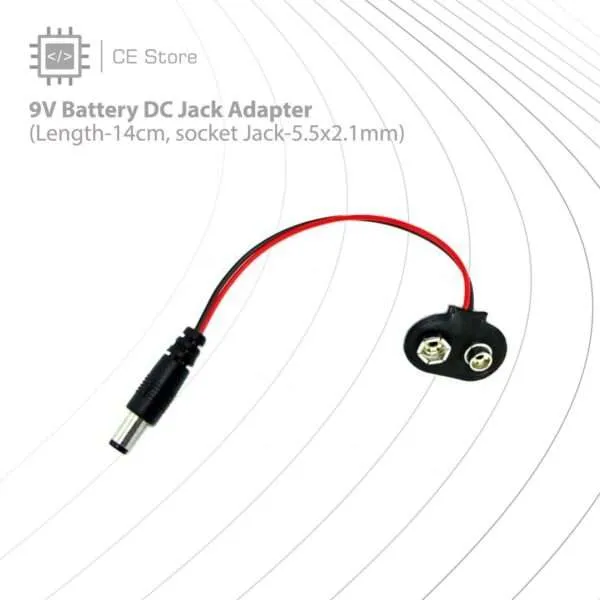
 Design with power jack in Cirkit Designer
Design with power jack in Cirkit DesignerIntroduction
A power jack is a connector used to supply electrical power to a device from an external power source. It is commonly found in various electronic devices such as laptops, routers, and development boards like the Arduino UNO. Power jacks are essential for providing a stable and reliable power connection, ensuring that the device operates correctly.
Explore Projects Built with power jack
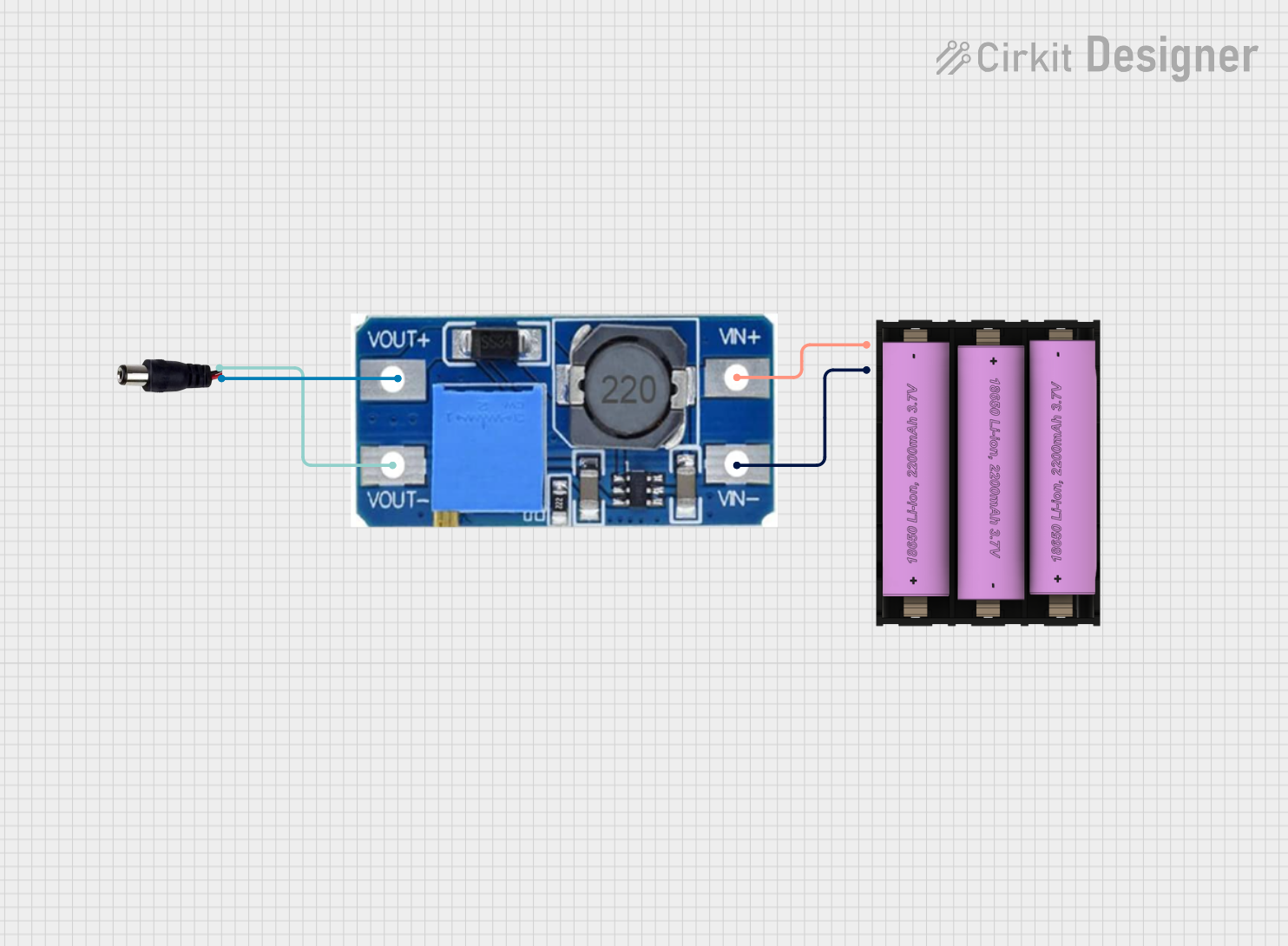
 Open Project in Cirkit Designer
Open Project in Cirkit Designer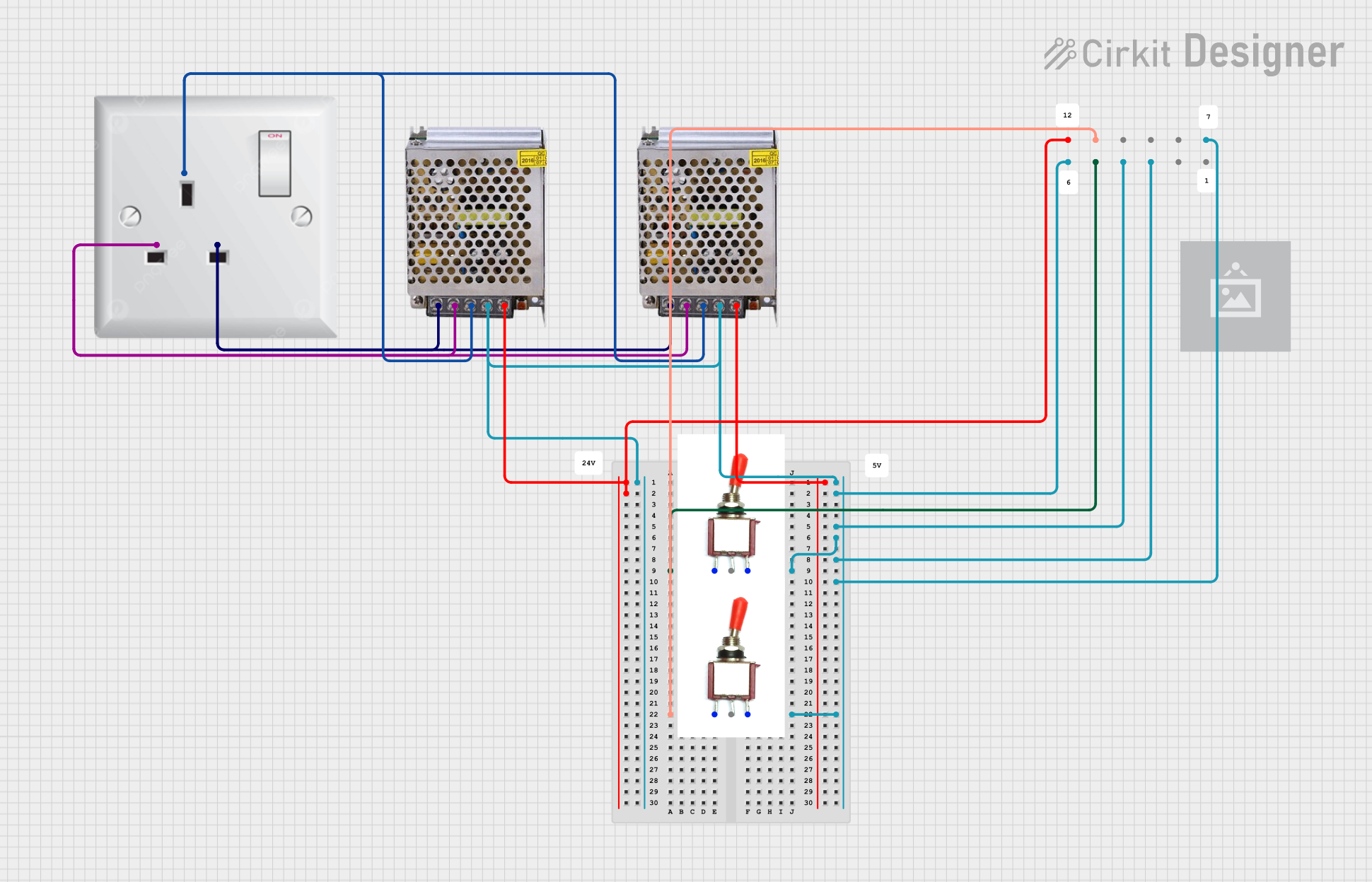
 Open Project in Cirkit Designer
Open Project in Cirkit Designer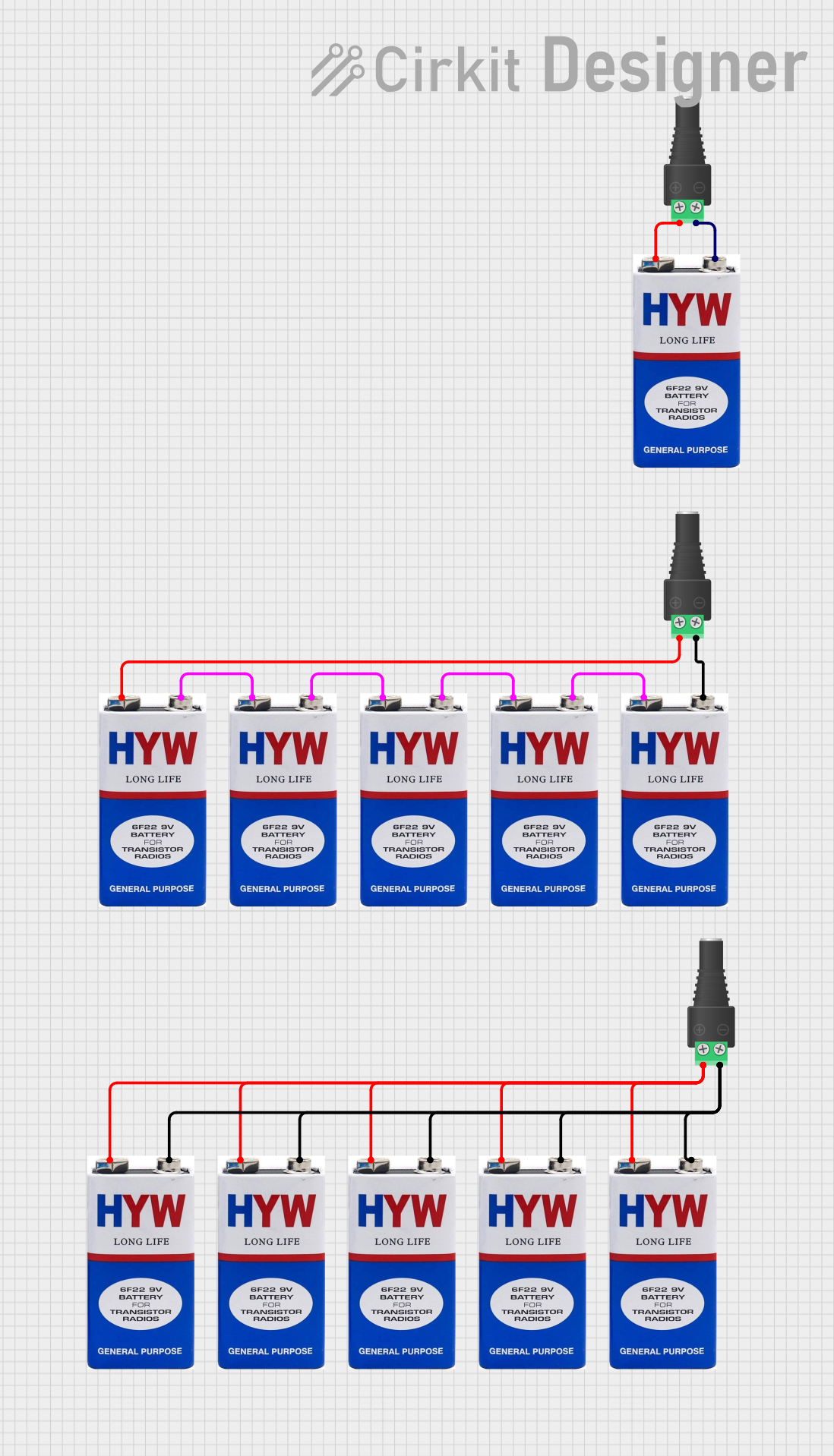
 Open Project in Cirkit Designer
Open Project in Cirkit Designer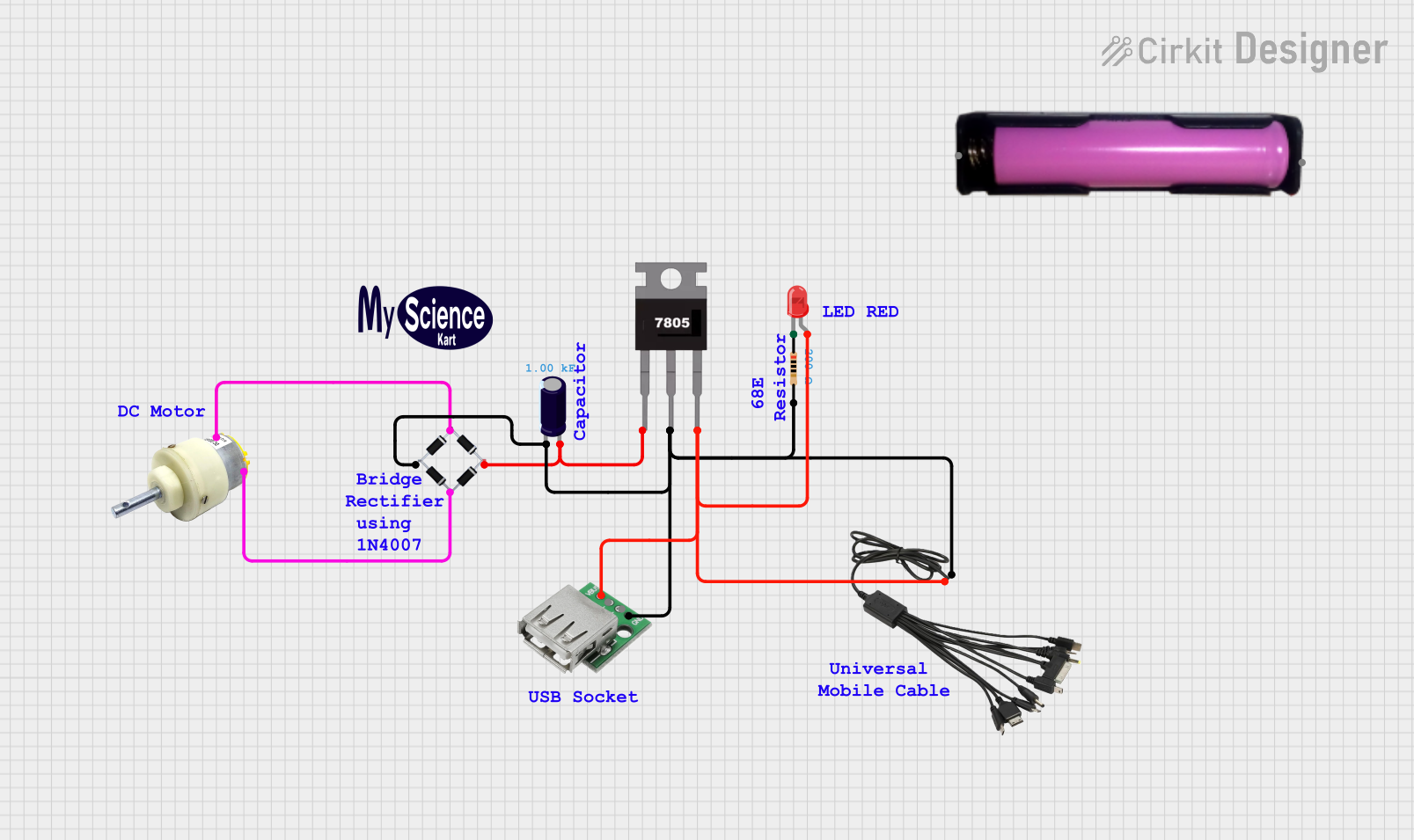
 Open Project in Cirkit Designer
Open Project in Cirkit DesignerExplore Projects Built with power jack

 Open Project in Cirkit Designer
Open Project in Cirkit Designer
 Open Project in Cirkit Designer
Open Project in Cirkit Designer
 Open Project in Cirkit Designer
Open Project in Cirkit Designer
 Open Project in Cirkit Designer
Open Project in Cirkit DesignerCommon Applications and Use Cases
- Laptops and Notebooks: Power jacks are used to connect the laptop to an external power adapter.
- Development Boards: Boards like the Arduino UNO use power jacks to receive power from an external adapter.
- Routers and Modems: These devices use power jacks to connect to their power supplies.
- Portable Electronics: Devices such as portable speakers and radios use power jacks for charging and power supply.
Technical Specifications
Key Technical Details
| Parameter | Value |
|---|---|
| Voltage Rating | 5V to 24V |
| Current Rating | Up to 5A |
| Power Rating | Up to 120W |
| Connector Type | Barrel Jack |
| Outer Diameter | 5.5mm |
| Inner Diameter | 2.1mm or 2.5mm |
| Polarity | Center Positive (commonly) |
Pin Configuration and Descriptions
| Pin Number | Description |
|---|---|
| 1 | Positive Terminal (Center) |
| 2 | Negative Terminal (Outer) |
Usage Instructions
How to Use the Component in a Circuit
- Identify the Polarity: Ensure that the power jack's center pin is positive and the outer sleeve is negative. This is the most common configuration, but always verify with the datasheet or manufacturer.
- Connect to Power Source: Connect the power jack to an appropriate power adapter that matches the voltage and current requirements of your device.
- Integrate into Circuit: Solder the positive terminal (center pin) to the positive power rail of your circuit and the negative terminal (outer sleeve) to the ground.
Important Considerations and Best Practices
- Voltage and Current Ratings: Ensure that the power adapter's voltage and current ratings match the requirements of your device to avoid damage.
- Polarity Check: Always double-check the polarity before connecting the power jack to prevent reverse polarity issues.
- Secure Connections: Make sure all connections are secure and insulated to prevent short circuits.
- Heat Dissipation: If your device consumes a lot of power, ensure proper heat dissipation to avoid overheating.
Example: Connecting a Power Jack to an Arduino UNO
To power an Arduino UNO using a power jack, follow these steps:
- Identify the Power Jack: Use a 2.1mm center-positive power jack.
- Connect the Adapter: Use a 9V or 12V DC adapter with a current rating of at least 500mA.
- Plug into Arduino: Insert the power jack into the Arduino UNO's power socket.
// No specific code is required for powering the Arduino UNO via the power jack.
// Simply connect the power adapter to the power jack and plug it into the Arduino.
Troubleshooting and FAQs
Common Issues Users Might Face
Device Not Powering On:
- Solution: Check the power adapter's voltage and current ratings. Ensure the power jack is securely connected and the polarity is correct.
Overheating:
- Solution: Ensure the power adapter's voltage is within the recommended range. Check for proper ventilation and heat dissipation.
Intermittent Power Loss:
- Solution: Inspect the power jack and adapter for loose connections. Ensure the power jack is firmly plugged in.
FAQs
Q1: Can I use any power adapter with my power jack?
- A1: No, you must use a power adapter that matches the voltage and current requirements of your device. Always check the specifications.
Q2: How do I know if my power jack is center-positive?
- A2: Most power jacks are center-positive, but you should verify this by checking the datasheet or using a multimeter.
Q3: What should I do if my device doesn't power on after connecting the power jack?
- A3: Double-check the polarity, voltage, and current ratings. Ensure all connections are secure and there are no short circuits.
By following this documentation, users can effectively utilize power jacks in their electronic projects, ensuring reliable and safe power connections.